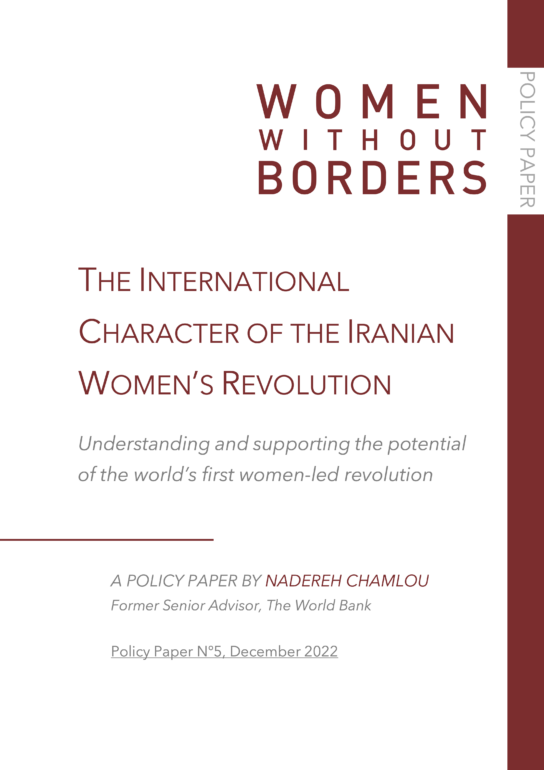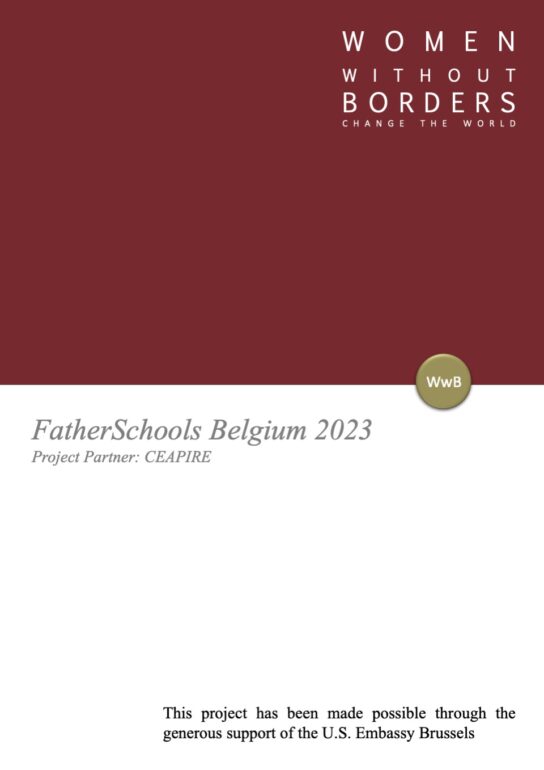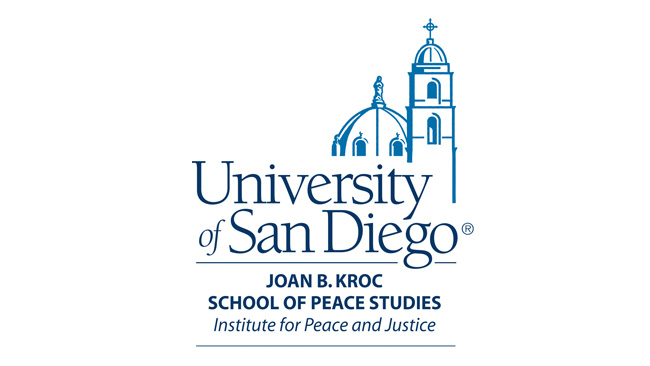In our fifth policy paper of the year, Nadereh Chamlou considers the international character of the Iranian women’s revolution of 2022 and revisits the movement’s origins that can be traced back to the mid-nineteenth century. To shed light on the nature of today’s Iranian protest movement and provide guidance to policy shapers and human rights advocates, this policy paper tackles several timely questions: what sparked this revolution? What are the unique characteristics of GenZ, born between 1997 and 2015, the generation that is at the forefront in opposing the regime? And in the light of the ongoing protest’s broader international implications, what must the international community do to: help the uprising succeed in Iran; safeguard women’s rights; and inspire democratic movements worldwide?
The origins of the Iranian women’s revolt
The Iranian women’s struggle for equal rights began in the mid-nineteenth century, around the time of similar movements in the West. Nonetheless, the clergy and the prevailing, deep-rooted patriarchy marginalised women at important historical turning points. For instance, women took an active role in the decades-long constitutional movement of the late nineteenth century but were left out of the 1906/1911 constitutions, which categorised them as second-class citizens and gave them rights on par with criminals and the mentally impaired. Between 1925 and 1979, their agency and advocacy did however find the receptive ears of the two Pahlavi monarchs who––despite the strong resistance of the clergy––saw women’s emancipation as an important dimension of their broader modernisation agenda. They gradually paved the way for the expansion of women’s rights with the 1934 abolishment of the veil, the 1963 right to vote and be elected, the 1967 progressive family law that afforded women as much equality as was feasible in the context of the time, and the affirmative environment for women’s social and economic inclusion.
The revolutionaries of varying ideological stripes, who had fought the Pahlavis for decades with the promise of respect for human rights and inclusive democracy, swiftly marginalised women when they established the Islamic Republic in 1979. Except for the right to vote, all other legal gains were reversed or diluted: the compulsory veil was reimposed, and women were excluded from many arenas on the grounds that Islam supposedly predefines their role as mothers and wives. Iran has consistently been considered to be among the most misogynist regimes in the world. It is ranked fourth lowest on the 2022 World Economic Forum’s Gender Gap Index and also receives one of the worst scores of any nation from the World Bank’s Women, Business, and Law Report for its many gender/sex-based legal barriers.
Yet the lingering taste of social freedoms and legal rights enjoyed for some decades, and the considerable capabilities gained during the half-century Pahlavi era, compelled Iranian women to resist the Islamic regime’s archaic gender ideology. Women pushed back at every critical policy juncture, mobilised innovatively, and expanded their presence wherever they could, such as in sports, education, the arts, and culture. A visible example is the steady transformation of the hijab rule, which has morphed from the regime’s favoured strict full-length black chador into the short colourful flirtatious body-contouring fashion that has become ubiquitous on Iranian streets. Iranian women have found even this version still too intrusive because of its compulsory nature. Recent visitors to Iran say that women go increasingly unveiled, and on 4 December 2022, some regime officials suggested that the morality police had been disbanded, which was soon denied. The hijab, together with the belligerence toward America and Israel, constitutes a critical ideological pillar of the regime. Even if the rumours had been true, it would still have been too little too late to appease the population. Nevertheless, the steady transformation of hijab fashion over the years is a clear victory for women. And the regime considers such encroachment or abandonment an existential threat.
Read the policy paper in full here.




